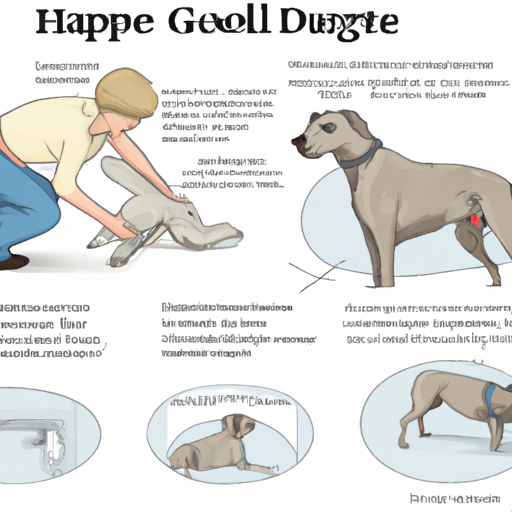Introduction
Imagine watching your beloved pet limp around your home, their usual bounding energy reduced to a painful hobble. It’s a heartbreaking sight, one that no caregiver ever wants to witness. But accidents happen, and sometimes, a dog’s hip can become dislocated. Knowing how to handle this situation may not only save you a trip to the vet but also ensure your furry friend gets back on their paws as soon as possible.
Recognizing the Signs of a Dislocated Hip
Before you can treat a dislocated hip, you need to know what to look for. Here are some common signs:
- Limping or inability to walk: Your dog might be unable to put weight on the affected leg or even move it at all.
- Pain: Dislocation is painful. Watch out for signs of discomfort such as whining, panting, or anxious behavior.
- Physical deformation: The hip may appear out of place, with a noticeable bulge or irregularity in the hip area.
First Aid for a Dislocated Hip
Before rushing to the vet, some immediate steps can be taken:
- Keep your dog calm: Dislocation is stressful, and a panicked dog is harder to treat. Speak softly, pet them gently, and try to keep them still.
- Immobilize the leg: Use a towel or blanket to create a sling that supports the leg and keeps it from moving.
| Step | Description |
|---|---|
| 1 | Lay the towel under the affected leg. |
| 2 | Bring the ends up over the dog’s back. |
| 3 | Tie the ends together to form a sling. |
- Contact a vet: Even if you can handle the immediate situation, it’s crucial to get professional help as soon as possible.
When to Seek Professional Help
While it’s possible to perform some first aid at home, a dislocated hip is a serious condition that requires professional treatment. If you notice any of the following signs, seek immediate veterinary help:
- Your dog is in severe pain.
- The dislocation is causing circulation problems.
- You’re not comfortable or capable of providing first aid.
Helping Your Dog Recover
After a dislocation, your dog will need time to recover. During this time, it’s important to:
- Keep your dog calm and comfortable.
- Limit their physical activity.
- Ensure they are eating and drinking properly.
Remember, patience is key during this period. Your dog may be frustrated by their limited mobility, but with time and care, they’ll be back to their old self.
Frequently Asked Questions
Q: Can a dislocated hip heal on its own?
A: No, a dislocated hip requires professional treatment. Attempting to let it heal without intervention could lead to further complications.
Q: How long does recovery take?
A: Recovery times can vary depending on the severity of the injury and the dog’s overall health. Always consult with a vet for an accurate timeline.
Q: Can this happen to any breed?
A: Yes, hip dislocation can occur in any breed, though some breeds are more prone to it than others due to their physical structure and genetic disposition.
In conclusion, while it’s important to know how to provide first aid for a dislocated hip, it’s equally crucial to seek professional help. With proper care and attention, your dog can recover fully from this painful condition.



